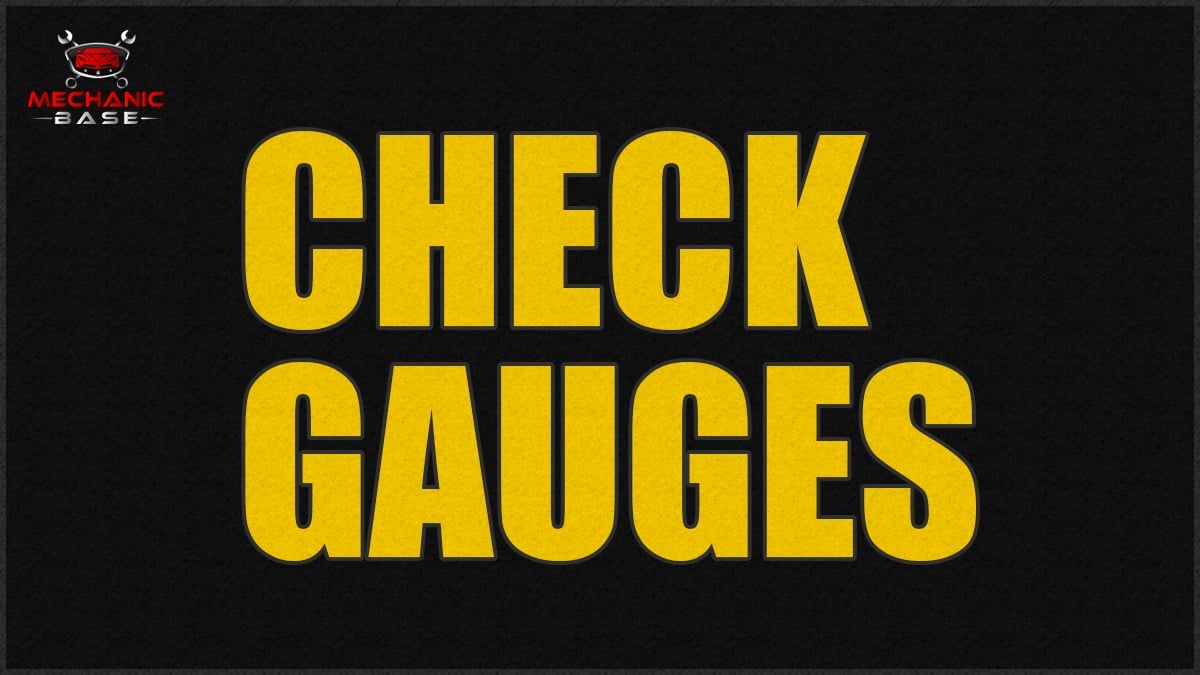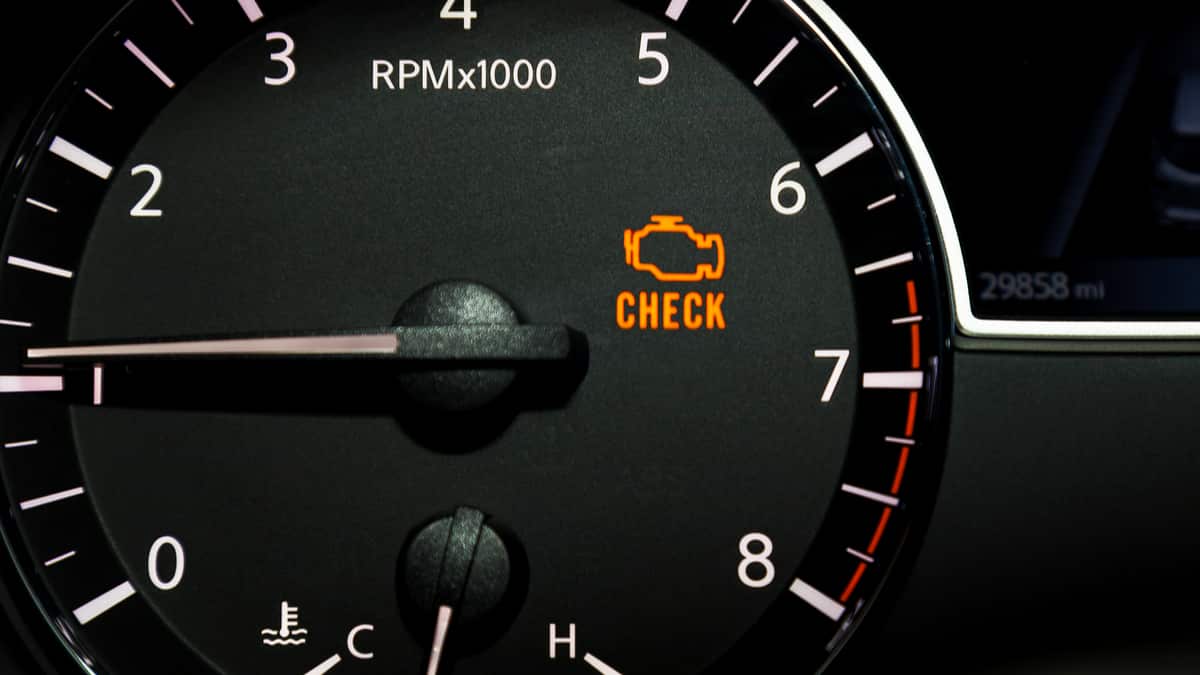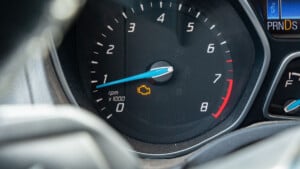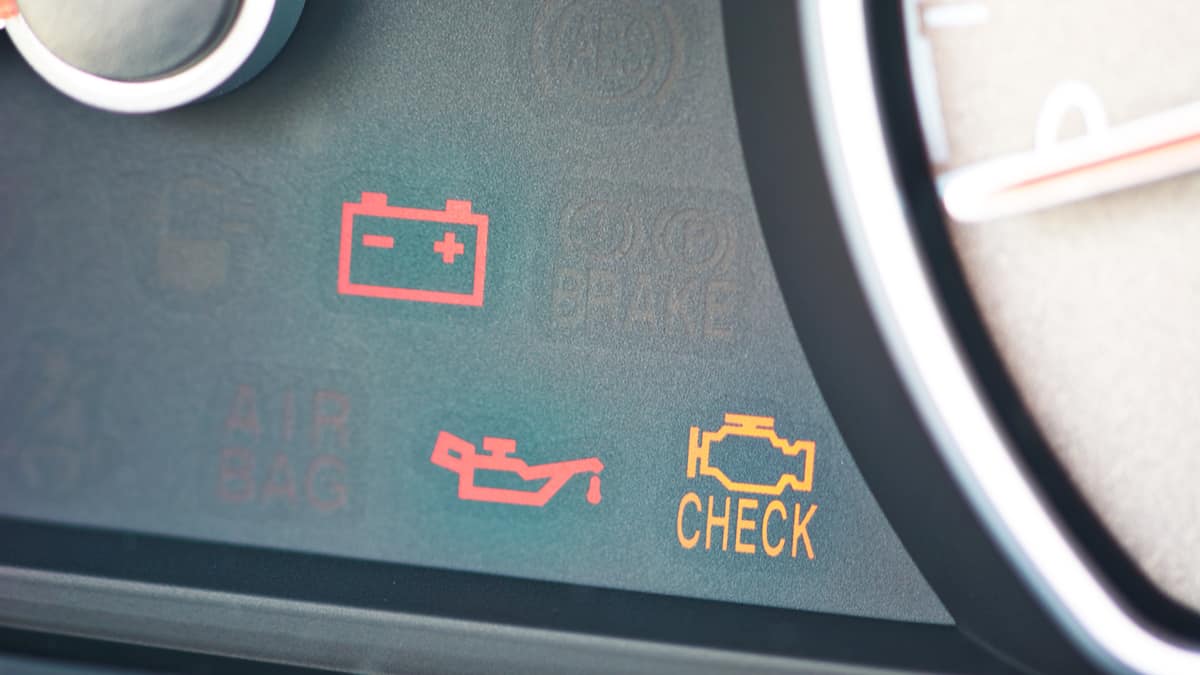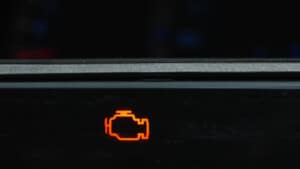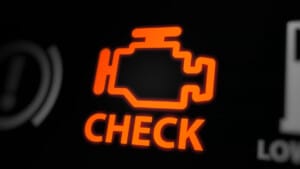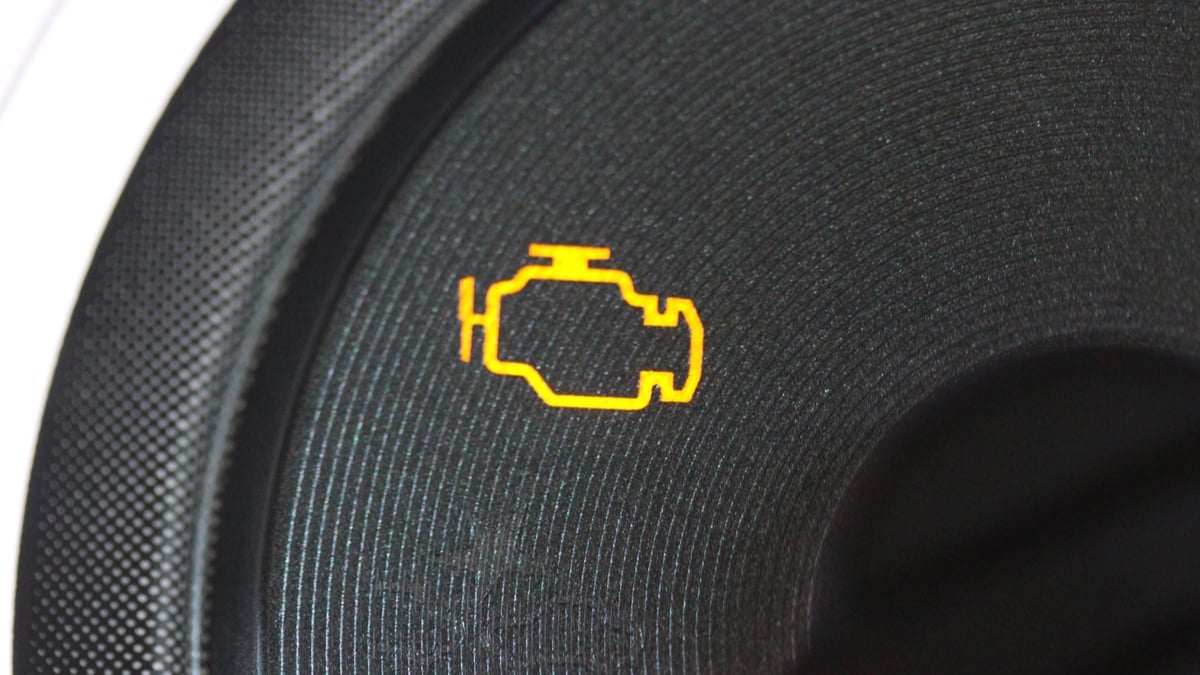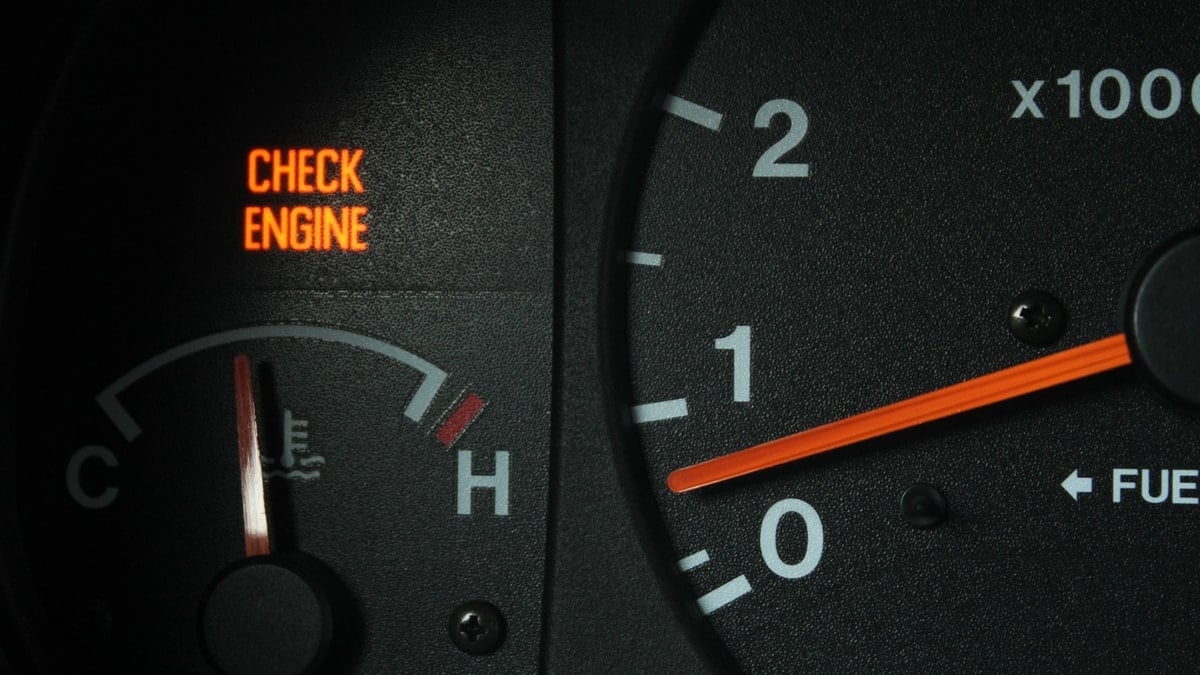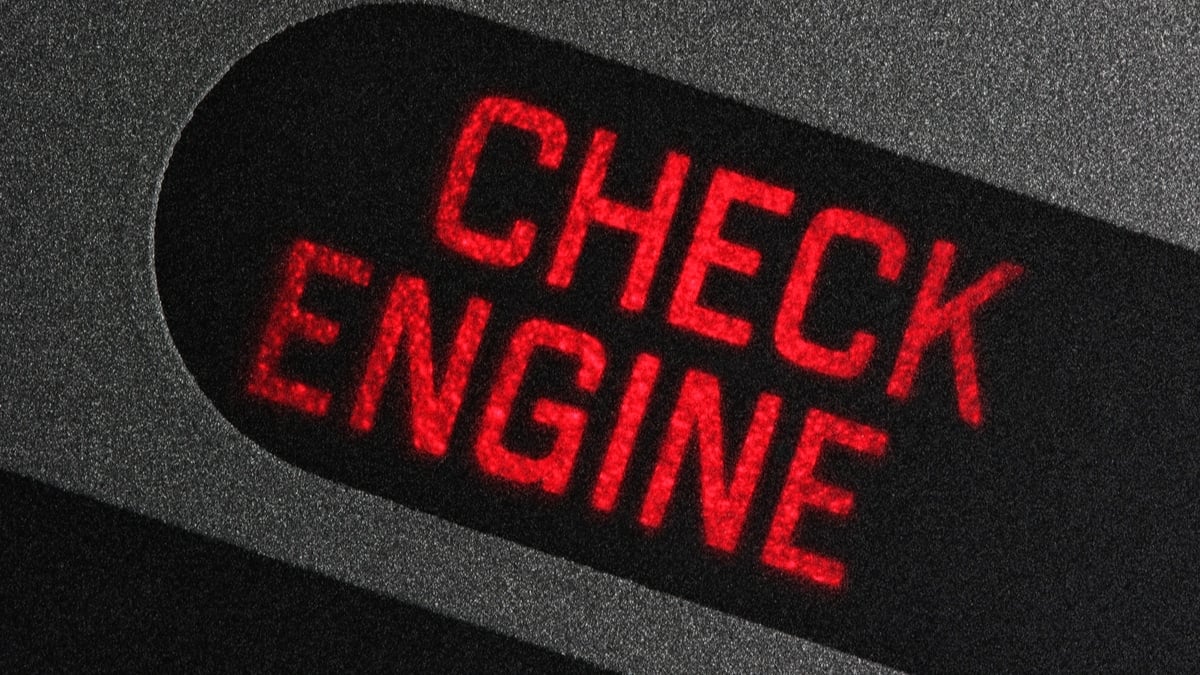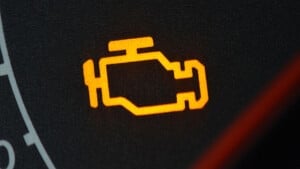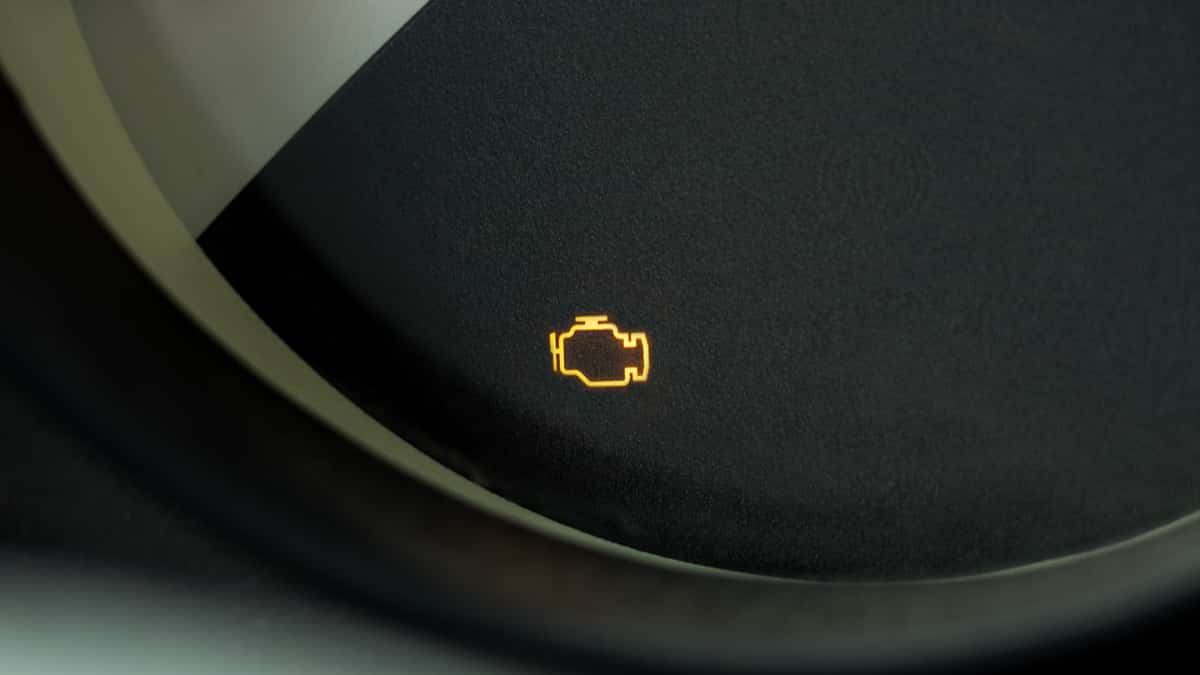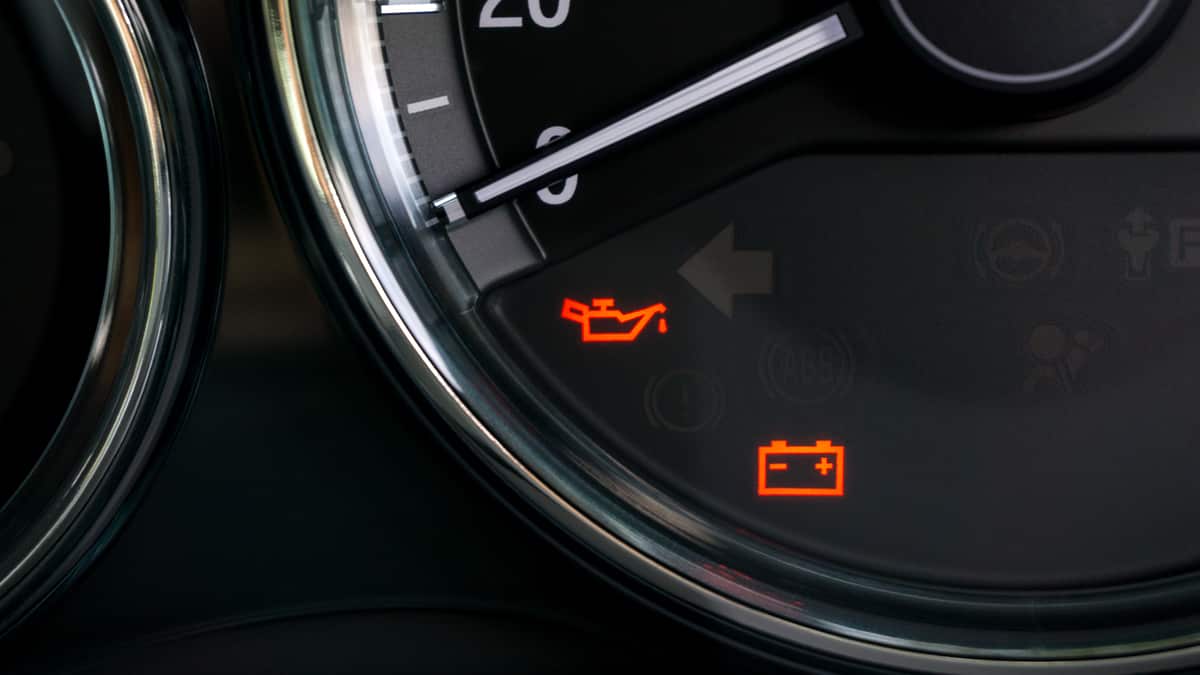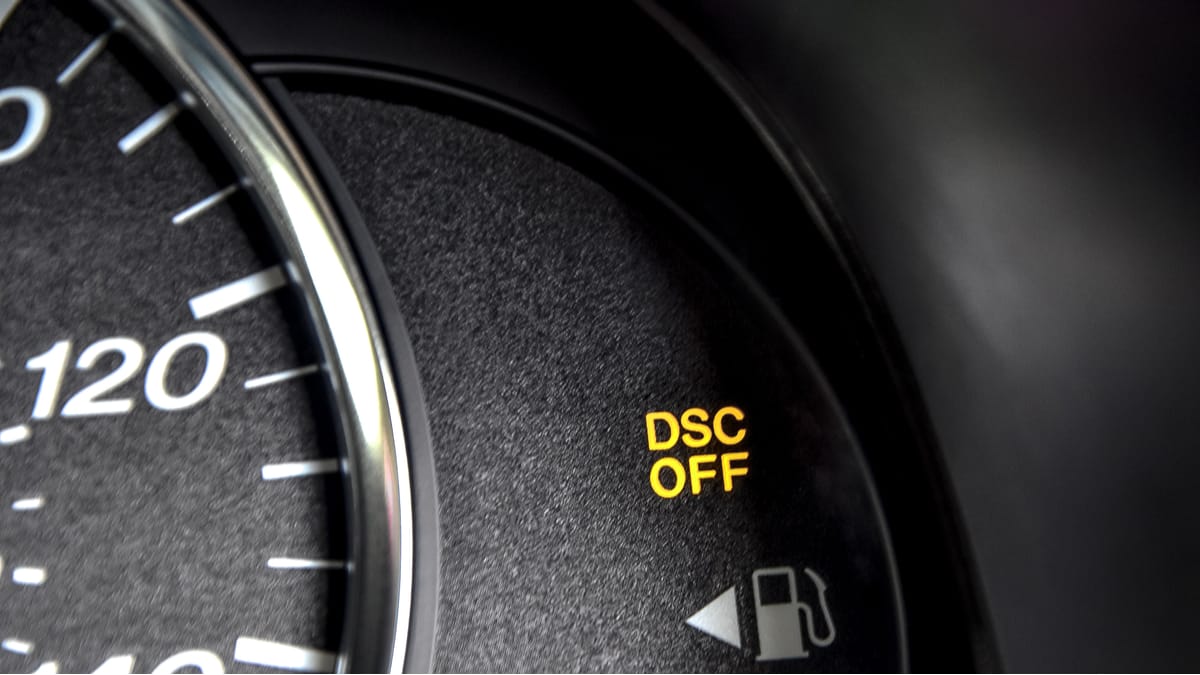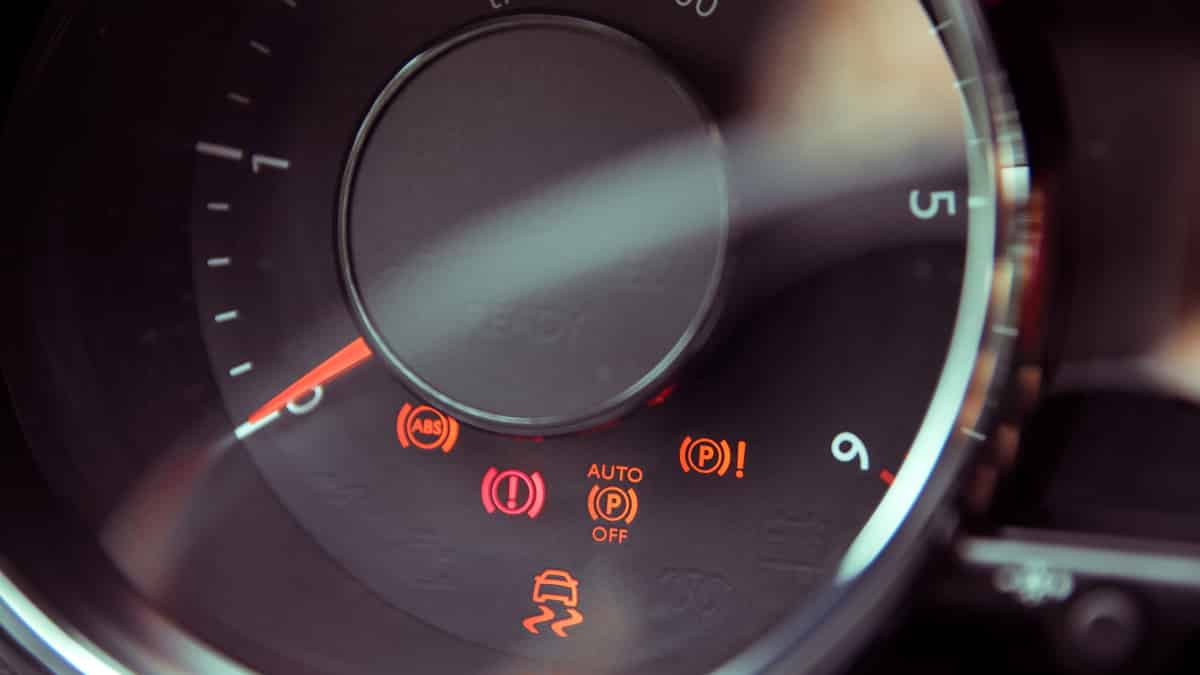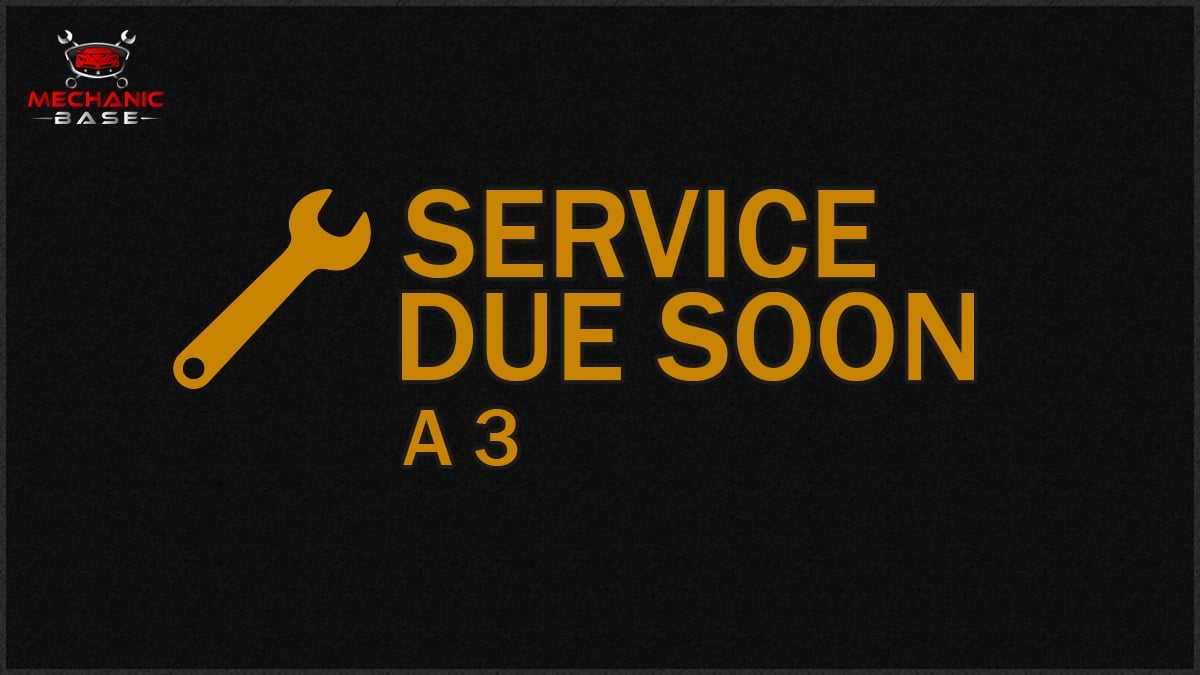As drivers, we are taught to keep a close eye on the dashboard gauges to watch the status of our vehicles. When a warning light comes on, we are supposed to take quick action to prevent bigger problems from occurring. So, what does it mean when the Check Gauges Light comes on, and what should we do about it?
In this guide, I cover the meaning of this important warning message. I will show you what might cause it and how to fix the problem. At the end of this article, you’ll get some answers to questions you might have been asking.
What Does The Check Gauges Light Mean?
The Check Gauges Light indicates that one of the readings coming from a vehicle gauge is outside of its normal parameters. You will often see a warning light indicating the problem along with this dashboard alert. These warnings can occur for minor and major problems.
The Powertrain Control Module (PCM) is responsible for turning on the Check Gauges Light. If one of the gauges is outside of its normal range, not only will a warning come on for that system, but this light will also be set. The Check Gauges Light can be yellow, orange or red. It can also come on solid or start flashing.
The Check Gauges Light illuminates when there is a wrong reading from:
- Coolant temperature
- Oil pressure
- Voltmeter
- Fuel level
- Tire pressure
- Wheel Speed
- Engine RPM
You can reference the owner’s manual to get more information about the combination of lights that you see.
RELATED: 7 Types of Gauges in a Car
Check Gauges Light Causes
The most common causes of a Check Gauge Light are bad engine ground, low battery voltage, or a faulty gauge sensor such as the coolant temperature sensor, oil pressure sensor, or tire pressure sensor. It can also be caused by low fluid levels.
Here is a more detailed list of the causes of a Check Gauges light.
1. Bad Engine Ground
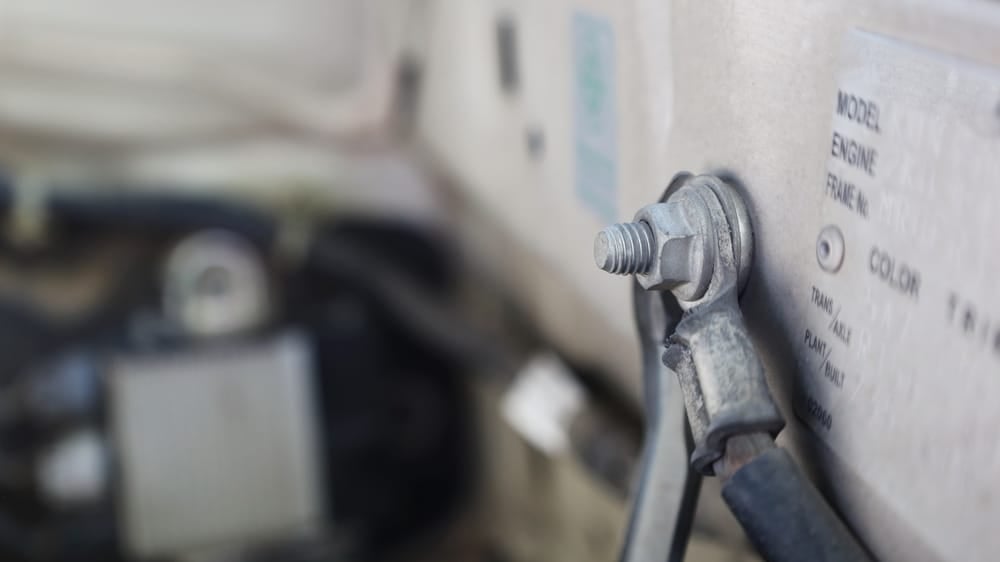
The most common cause when it comes to the Check Gauges Light is poor ground between the engine and your car’s chassis. Usually, there are one or more ground wires running between them, and if the ground point is corroded or rusty, it can lose the connection.
When the ground is bad, it will cause incorrect readings from the engine’s sensors, which will result in a check gauge.
2. Coolant Temp Sensor or Engine Overheating
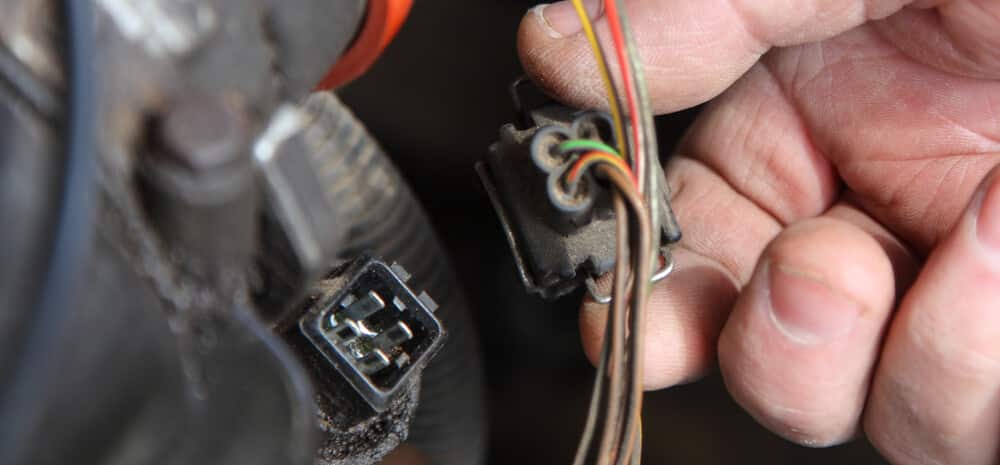
There are several causes that can lead to an overheating engine, but all causes should also create the temperature warning light on the dashboard. With this could also come the Check Gauges Light.
The most common reason for this is a bad coolant temperature sensor that’s sending the wrong data to the engine control module and instrument cluster, but it can also be caused by coolant issues such as a bad thermostat or an overheating engine.
When the engine starts to overheat, you might have some warning. You could see the temperature gauge rising on the dashboard if your car has one. You might also smell something burning or see some leakage underneath your vehicle.
3. Oil Pressure Sensor or Reduced Oil Pressure
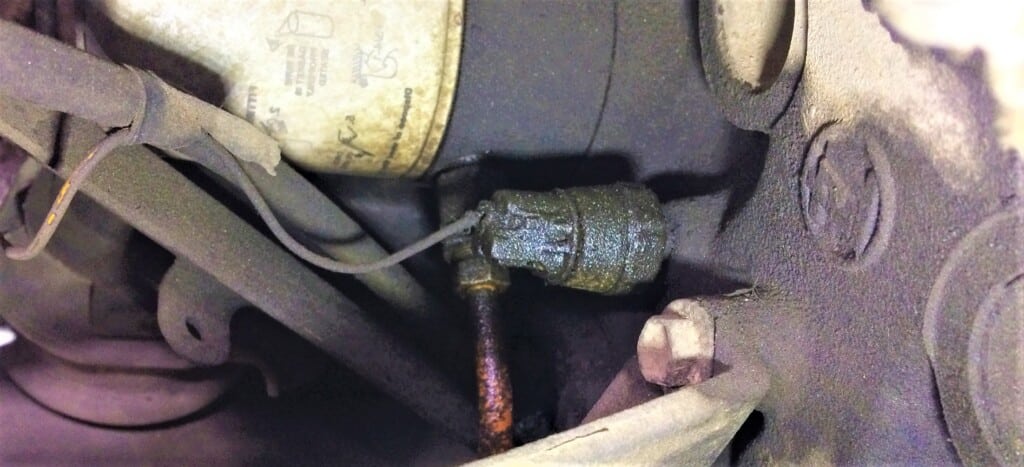
The engine requires a certain amount of oil pressure to ensure proper operation. If the oil pressure drops, the motor won’t have the lubrication it needs and the Check Engine Light could come on. You may also see an oil pressure warning light, along with the Check Gauges Light.
In most cases, the reduced oil pressure is caused by a bad oil pressure sensor or low oil. There could also be a defect with the oil filter. Furthermore, if you use the wrong oil or choose an inappropriate viscosity, problems are sure to arise.
4. Faulty Fuel Level Sender
Inside your car’s fuel tank is a fuel level sender that sends information about how much fuel is in the fuel tank. If there is a problem with this transmitter unit or the wiring to the instrument cluster, it will send the wrong data, and a Check Gauges light will appear on your dashboard.
RELATED: 3 Symptoms of a Bad Fuel Gauge Sender (& Replacement Cost)
5. Dead Battery/Blown Fuse
There’s a battery warning light on your dashboard that indicates when there are charging problems. When this light comes on, there may also be a warning to check the gauges. Even though this light shows a battery, it can mean a multitude of things. You may need to replace the battery, but it could also show you that there’s trouble with the alternator or electrical connections.
Additionally, a blown fuse can lead to many complications, some of which can appear confusing, depending on what system is affected. You can check the fuses to see what’s blown and replace it with a fuse that runs on the same amperage.
RELATED: 6 Symptoms of a Bad Car Battery, Location, Function & How to Test it
6. Improper Tire Pressure
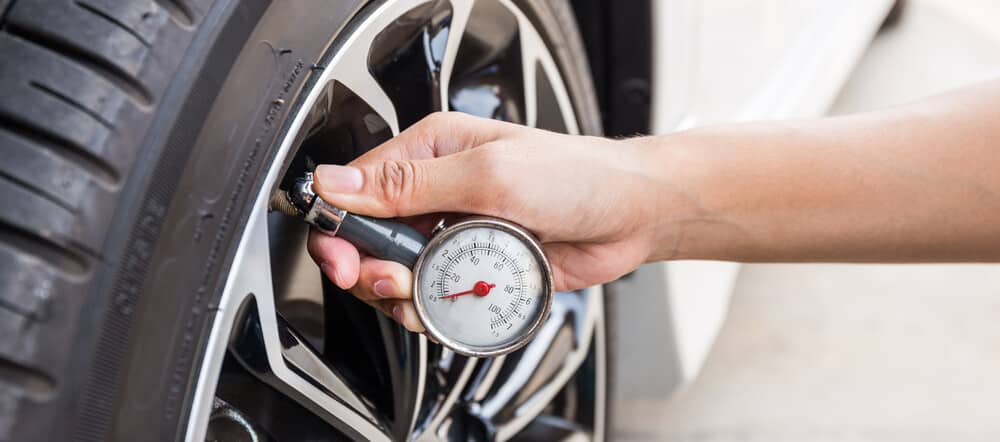
With each tire, your modern vehicle has sensors to monitor the pressure. If the pressure gets too low or high, based on manufacturer specs, the warning light will come on. This can also cause the Check Gauges Light to illuminate.
Running a vehicle with the wrong amount of tire air pressure can be disastrous. You could blow out a tire or run it flat, both of which could cause a major accident. It can also be caused by a faulty tire pressure sensor.
7. Ignored Maintenance
For your car to run right, you must follow the recommended maintenance schedule. These schedules are put out by the manufacturer and show you what tasks should be performed at particular intervals. Regular maintenance could include tire rotation, oil changes, spark plug replacement, air filter replacement and so much more.
If you choose to ignore the maintenance, the car will stop running right. Clogged filters and contaminated oil can cause any number of problems, including dashboard warning lights. To prevent this, you want to follow all recommendations.
8. Defective Computer
In your car, there could be several computers that keep everything running as it should. These computers read the information coming from the sensors and ensure that adjustments are made to match what’s happening.
While it doesn’t happen often, any one of these computers can malfunction. Whether it is the Powertrain Control Module (PCM) or the Electronic Control Unit (ECU), there’s always the chance that it needs an update or replacement. When this time comes, you should notice multiple issues occurring at once.
How to Fix Check Gauges Light
To fix the Check Gauges Light, you want to pull over safely and check all fluids in the engine compartment and top up if the level is low. Then you want to inspect the engine ground and read the trouble codes with an OBD2 scanner.
1. Pull Over Safely
The most important aspect when dealing with these problems is your safety. For that reason, when warning lights come on the dashboard, you may want to pull off the side of the road.
Of course, some warning lights are more severe than others. If a Check Engine Light is blinking, you should never continue driving. This indicates that there’s a major malfunction that must be dealt with immediately. If you choose to pull over, look for a safe place and put your hazard lights on.
2. Perform Maintenance & Fill fluids

If you have previously neglected maintenance or see the Service Engine Soon light, it’s best to start here. Perform all necessary oil changes, filter replacements and more before moving on.
Not only will these tasks make your vehicle run its best, but you will ensure maximum protection for all of the systems. You can find this scheduled maintenance list in your owner’s manual or online from the manufacturer.
Even if it’s not time for maintenance, you want to check all fluids in the engine compartment and fill them up to see if they will fix this warning light. You want to check the engine oil level, coolant level, power steering level, brake fluid level and washer fluid level.
3. Check engine ground
The next thing you want to do is check the engine ground between the engine and the car’s chassis. There are usually both thinner and thicker cables running between these and you want to look at their ground points.
If you see any corrosion on these ground points, or see a bad wire, you need to fix it as soon as possible and try again.
3. Check Engine Codes
When it comes to car issues in modern cars, you always want to read the trouble codes from the vehicle to determine what’s wrong with the car. With your code scanner, you can read the DTCs that are set in the system. Plug the scanner into the OBD-II port and reset the codes to start.
Turn on the engine and take it for a drive until the warning lights come back on. Once they have reset, you can look at the DTCs and live frame data to figure out what’s going on.
4. Repair Related Issues
The code or codes might not make immediate sense to you. For that reason, you might have to perform a little research.
At MechanicBase, we have a database of some of the most popular trouble codes to steer you in the right direction. Otherwise, you want to reference a manual specific to your car to get more information. Once you know what’s wrong, you can fix the issue and get rid of the warning lights.
You want to troubleshoot all sensors that’s sending information to the instrument cluster such as the coolant temperature sensor, oil pressure sensor, ABS wheel speed sensors, crankshaft position sensor, and tire pressure sensor.
5. Seek Help from a Mechanic
If you didn’t figure out what’s going on, it would be best to seek help from a professional. You can choose a local auto repair shop or a dealership that understands the make of your vehicle.
Additionally, if the repair is too complicated for you or you don’t have the right tools, you should get some more assistance. Don’t take on a project that’s over your head or you could face larger automotive problems.
Is It Safe to Drive with Check Gauges Light On?
It depends on why the light is on in the first place. If the engine is overheating or another major mechanical failure is occurring, you should stop driving the vehicle immediately before permanent damage occurs. Otherwise, you might be able to keep driving a short distance.
Why Does My Check Gauges Light Keep Coming On and Off?
The light is coming on to indicate that one of the other gauges is showing a malfunction. Depending on the issue, it could be intermittent, such as oil pressure. If the oil pressure continues to rise and fall back in line, the lights could go and off accordingly.
What Would Cause Gauges to Go Crazy?
If the lights and gauges are acting up when starting the car, there could be an electrical supply problem. The gauges can also act up if there’s a problem with the battery or alternator. Additionally, a bad connection or damaged wiring could lead to the same erratic behavior.
What is the Most Serious Warning Light in a Car?
The Coolant Temperature Light or Oil Pressure Light normally indicates the most serious problems, but none of the warnings should be ignored. Various serious problems can also cause the Check Engine Light to come on, ranging from minor, such as a broken fuel cap, to serious, such as an overheating motor.
The most common reason the Check Gauge Light appears is that there is a problem with the information being sent from an engine sensor to the instrument cluster. This can be caused by a faulty sensor or wiring.
As you become more versed in what the various warning lights mean on your dashboard, you may eventually see the Check Gauges Light included with them. This warning is generic, helping you to pay attention to the other things that are going on with your vehicle at the time.
Learn more:
- Temperature Gauge Stays On Cold? (Causes & How to Fix It)
- Fuel Gauge Not Working or Is Inaccurate? (How to Fix it)
- Car Temperature Gauge Goes Up and Down – Causes & How to Fix
Categories: Troubleshooting, Warning Lights
